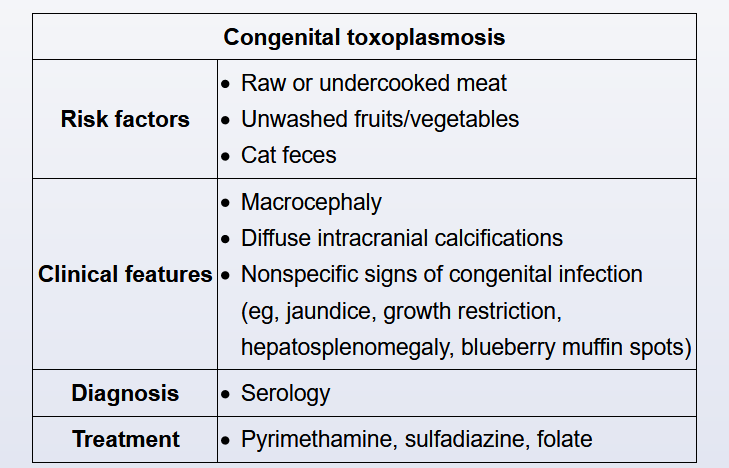Toxoplasmosis

Hydrocephalus, intracranial calcifications, and hepatomegaly are signs of congenital toxoplasmosis, which is acquired by transplacental transmission. Maternal infection is acquired via inadvertent ingestion of Toxoplasma gondii from cat feces, contaminated soil on fruits/vegetables, or undercooked meat; infection rates are highest in South America, where more virulent strains exist. Routine screening is not undertaken in the United States.
Although toxoplasmosis infection is typically asymptomatic in an immunocompetent adult, it can cause severe consequences in the fetus or newborn. After maternal ingestion, tachyzoites transmitted through the placenta invade developing fetal cells, most commonly in the muscle and brain. Classic congenital manifestations include eye abnormalities (eg, chorioretinitis), neurologic findings (eg, intracranial calcifications, hydrocephalus), and hearing impairment. When infection is suspected prenatally, diagnosis is made via maternal serology or amniocentesis. When the infection is suspected in a newborn, diagnosis is with neonatal serology. Treatment is with antiparasitic therapy (ie, pyrimethamine and sulfadiazine) and supplemental folate for a year.